Before getting into the detailed description of the various attractions and places to visit in Hampi, let me show the key attractions of the core area of Hampi on a Google map. This will help everyone to understand the sequence of photos of various attractions and also to make a plan for Hampi.
I will upload our actual itinerary, descriptions, and photos of the attractions covered by us in the post below. This article is in continuation to a previous one and a part of my complete Hampi travelogue. To read the previous part of the post, please click on the link below.
- Journey So Far: Day 1 – Mumbai to Hampi by Road
Hampi is huge with too many attractions. Each attraction deserves some bare minimum time. Therefore, Hampi cannot be covered in a single day. It needs 1.5/2 days.
So, the below-mentioned sequence cannot be followed in toto. We spent 2 days in Hampi so there were some crisscrosses. We also had to skip some of the attractions which were not accessible by road because of tiredness and heat.
Quick Navigation
Places to Visit in Hampi & Things to Do
The attractions of core areas of Hampi are on a ‘V’ with Kamalpur as the apex as shown in the map below:
Ideally, the day should be started with the Vijay Vitthala temple. Then come back to Kamalpura and take the other arm of the ‘V’ (Kamalpur-Virupaksha Temple road stretch) and the various attractions will come in the following sequence:
- Chandrasekhara Temple
- Saraswati Temple
- Octagonal Bath
- Queen’s Bath
After Queen’s bath, a detour has to be taken. You had to take a right turn and follow the gravel road to see the following attractions:
- Royal Enclosure
- Hazara Rama Temple
- Lotus Mahal
- Elephants’ stable
- Madhava (Ranga Temple)
- Jain temple
- Mint Area
- Palace of Vira Harihara
- The basement of King’s Palace
- The Mohammedan watchtower
- Band tower
- Mosque
- Prasanna Virupaksha (Underground Shivalaya Temple)
After Prasanna Virupaksha temple, the gravel road meets the aforesaid Kamalpur-Virupaksha Temple road stretch and a right turn is to be taken from that junction. The following attractions will appear in sequence:
- Uddana Veerbhadra Temple
- Chandikeshwara Temple
- Lakshmi Narasimha (Ugra Narasimha) Temple
- Badaviling Temple
- Krishna Temple
After Krishna Temple, a fork will come. The left prong of the fork Hampi road goes towards Hosapete via Hampi Village and the right prong goes towards Virupaksha temple. This will be clear from the following map:
Sightseeing in Hampi
So, from the fork, you have to drive a few hundred meters to see Saasivekaluu Ganesha and then need to come back to the fork to take the right prong towards Virupaksha temple. On that route, you will first find Kadalakeu Ganesha temple & Hemakutha Hill complex will come and then after reach Virupaksha temple and Bazar.
Hemkutha hill complex can be reached from Saasivekaluu Ganesha also but the entire temple complex is on the other side of the slope and therefore easier to access from the Kadalakeu Ganesha temple side. This complex is not accessible by car from any side so you have to walk.
Also Read: Bike Trip to Wayanad – A Ride to The God’s Own Country
On one end of Virupaksha Bazaar is Virupaksha Temple and at the other end is Monolithic Bull. From Monolithic Bull, you can access the following attraction on foot:
- Achutyraya Temple and Bazaar
- Matanga Hill
- Kodanarama Temple
From Kodanarama Temple, you can go to the bank of Tungabhadra for a boat ride in an interesting round-shaped boat.
So if you make Hosapete your base, you can start the day with Vijay Vitthala temple via Kamalpur and at the end of the day return via Hampi road as shown below:
Hemkuta Hill
We started from the KSTDC guest house at 8.30 am.
At that point in time, our knowledge was completely based on Google Maps. Since as per Google Map, Hemkuta hill was accessible by road, we decided to go there first.
The idea was to cover as many attractions on Kamalpur-Virupaksha temple road on the 1st day and to cover the remaining attractions on Kamalpur-Virupaksha temple road and Vijay Vitthala temple on the 2nd day and then proceed towards Anegundi en route Badami.
Also Read: Mysore Coorg Ooty Road Trip – How to Plan & What to See
To go to Hemkuta temple directly from Hosapete, you have to take Hampi road after traveling around 14 km on Hosapete-Kamalpur road. After crossing around 11 km on Hosapete road, we saw an old temple at the side of the road and decided to take the first stop of the day there. It was 9 am then.
There was no description of the temple. It seems to be a Shiva temple. After spending 5 minutes there, we resumed our journey.
After a few minutes, we reached the junction of the Hampi road and took a left turn.
Immediately after taking Hampi Road, we saw an old Tomb and Dargah at our left-hand side and got down. Those tomb and grave structures were constructed following the Bahmani style of architecture which was known for its austerity.
After spending around 10 minutes there, we started for Hemkuta hills.
Hampi Village
After 5-10 minutes, we reached a place where there was no road in the direction as shown by Google map. So, we got down from the car. There were few people standing there all of whom were tourist guides.
From them, we understood that this is Hampi Village and Hemkuta hill cannot be accessed from this. Inevitably, they started convincing us that we must take a guide. After some negotiation one fellow agreed to guide us till 6 pm for Rs. 1500/-. As per his advice, we started for Vijay Vitthala Temple.
After the entire day’s experience, we realized that we took the correct decision by hiring a guide. Not only did he provide much additional information (which may not be authentic), but also made the day’s itinerary more time-efficient.
Also Read: Bike Trip to Nandi Hills – Dawn At Hill’s Edge
Vijay Vitthala Temple
So we come to the junction of Hampi Road and Kamalpur-Virupaksha Temple road and took the right turn for Kamalpur as shown in the map of the previous post.
We took one stop on that route as per the advice of our guide to see the plates and dining arrangement of that era. Probably, this was the dining hall for the soldiers. No superstructure was there now. Only the row of fixed plates and drainage system adjacent to that are proofs of the bygone era.
We reached the parking lot of Vijay Vitthala temple around 10.15 am. On the way, we crossed Taralighat Gate.
Vijay Vitthala Temple is not accessible by car. There is a parking lot around 1 km away from the temple. From there, the temple can be reached by either a trolley bus or walking. The trolley bus ticket costs Rs. 20/- head.
Gejjala Mandata, Kuduregompe Mantapa
Beside the parking lot, we saw an old structure called Gejjala Mandapa. It is believed to have been used for religious functions during the days of the Vijayanagara Empire.
Midway between the parking lot and Vijay Vitthala Temple, we saw Kuduregombe Mantapa which was on the left side of the road. The name is derived from the horse sculptures (Kudure means horse in local dialect) that adorn its front pillars. For what purpose this had been used is still doubtful.
However, its location, which is on the chariot road and tentatively facing the temple pond, suggests this structure was of some significance during the annual chariot festival or the boat festival held in the temple tank just across.
Also Read: Bike Trip to Ooty – A Bike Ride from Bangalore to Ooty
Vijay Vitthal Bazar
At the right side of the road were remnants of Vijay Vitthala Bazar and Pushkarini (tank). At its prime, this Bazar was 945 meters in length and 40 meters in width.
Each major temple of Hampi had an adjacent Bazar and Pushkarini. Vijay Vitthala Bazar used to be used for trading horses primarily.
The Vijay Vitthala temple was dedicated to Lord Vishnu. Vitthala is the Krishna aspect of Lord Vishnu.
Temple Complex
The temple complex has three gates (Gopuram). The main gate is towards the east. The other two gates are towards the north (Tungabhadra riverside) and south.
Other than the main temple of Vitthala, the complex houses a stone chariot at the east of the main temple (between the temple and the eastern gate).
There is also the ornate Kalyani Mandapa (Marriage Hall for the deities) at the southeast of the main temple, Sabha mandapa (Congregation Hall) at the southwest of the main temple, Utsava Manadap (Festival Hall) at north-east of the main temple and a Devi shrine. The northern bay of Sabha mandapa is called Narsimha mandapa.
This temple complex represents the highest watermark of the Vijaynagara style of art and architecture. It is one of the largest temples built in that period, built under the patronage of Devaraya II (1422-46 ad). Substantial portions of the present structure were added during Krishnadevaray’s reign (1509-1529 AD).
The hundred pillared Sabha Mandapa and the eastern and northern gates curved with descriptions of Vishnu and his other forms are attributed to Krishnadevaraya and his queens.
The temple is built on a sculptured ornate plinth. The composite pillars of the Sabha Mandapa are massive, hewn out of single granite blocks, which are designed as clusters of slender pillars. Some of the pillars are musical pillars, when tapped gently, produce musical notes.
The Utsava Mandapa does have musical pillars too. In the Narsimha mandapa, there is a pillar that has the sculpture of a Yogavarada Narshimha and various other forms.
The stone chariot, a reproduction of a professional wooden chariot, is the most stunning sculpture, in my opinion. Typical of the Vijaynagara period, it houses an image of Garuda, the vehicle of Lord Vishnu.
Queen’s Bath
We spent around 1.30 hrs at Vijay Vitthala temple. We came back to the parking lot around 11.45 am and started for the next destination, Queen’s bath.
Queen’s bath is located at the Southeast of the Royal Enclosure. It had its separate enclosed space, consisting of a complex of changing rooms and a bath. At present, only the bath is extant. On the outside, it is a simple facade structure in the Indo-Islamic style of Vijayanagar architecture.
Also Read: Road Trip to Madikeri – Boat Rafting in Madikeri
The total area of the structure is 30 sq. meters. The total area of the bath is 15 sq. meters. and it is 1.8 meters deep. The pillared and vaulted corridor runs all around the bath with ornate balconies projected into the bath.
There is an intel water channel to the east and moat that runs all around the structure ensuring a constant supply of freshwater. The interior of the bath is in sharp contrast with the simplistic structure of the outside, with its ornate stucco and plasterwork.
Royal Enclosure
After Queen’s Bath, we proceeded to the Royal Enclosure taking a right turn from Kamalpaur-Virupaksha temple road. It was a gravel road. Royal Enclosure is very close to Queen’s Bath. The distance is less than 1 km.
The Royal Enclosure, admeasuring 59,000 sq meters was the nucleus of Hampi and had housed as many as 43 buildings. It was protected by a double wall with three gates.
Now, no superstructure which was primarily made of sandal and teak wood exists today. It was completely destroyed by the victorious army of the coalition forces of the Deccan Sultanate. Only the plinth manage to survive that onslaught probably because it is made of granite.
The remnants of the main entrance
At the eastern side of the Royal enclosure, there is an elevated platform of 80 square ft. in the area and 22 ft in height. This is Mahanavami Dibba. It was built by King Krishna Devraya in memory of the conquest of Orissa. Dussera celebration used to take place here.
The remnants of the bygone era are scattered across the entire area of the Royal Enclosure. Though it was November, there was no respite from the unbearable heat on account of the blazing Sun. So after visiting the stepped water tank and king’s secret chamber, we decided to take a lunch break and headed towards Kamalpur market.
Kamalapura Market
We had our lunch at a restaurant called ‘Pink Mango’. It is at Kamalapura market, on Daroji-Kamalapura Road, bang opposite of Kamalapura Archeological Museum. It is a non-AC restaurant on the first floor. The sitting arrangement is a bit different. You have to sit on the floor. There are cushions for that.
There are slightly elevated rectangular tables on which food gets served. The cushion comes with a pillow so that someone can take a rest. The overall ambiance was good. It was a vegetarian restaurant. We ordered for special South Indian Thali. Each thali cost Rs. 125/-. The ala-carte food menu was also there.
After our lunch, we came back to the same place. Hazara Rama temple, our next destination, is adjacent to the Royal Enclosure. It was 2.30 pm by then. In the open place in front of Hazararama temple, there is a signboard mentioning ‘Pan Supari Bazar’. There were no remnants of the old bazaar there other than a few lamp posts.
Hazara Rama Temple
The Hazara Rama temple is a 15th-century temple. It is the only temple in the core of the royal enclosure. This temple was built for the royal family exclusively. The temple is dedicated to Lord Vishnu in his aspect as Lord Rama.
This temple is a fine example of a compact Dravida Vimana type of temple with sanctum, vestibule, pillared dance hall, entrance porch to the north and south. The eastern porch is extended into an elegant pillared pavilion. There is a shrine for the Goddess to the north which is also elegantly sculptured.
This temple is known for its sculptured friezes depicting the Ramayana, in three tires, running all around the main shrine and the narrative sculptures of Lava-Kusha story on the Devi shrine. Probably, because of this, this temple is called the Hazara Rama temple.
In addition, the temple is also known for the sculptures of the Bhagavata and sculpted polished pillars of the Maha Mandapa (main hall). It is evident that this temple received ample royal patronage.
After the Hazara Rama temple, the gravel road bifurcates. One branch turns in a westward direction and continues along the wall of the Hazara Rama temple complex. The other branch continues straight. We took the second one and immediately reached the parking lot of Zenana Enclosure.
Zenana Enclosure
Zenana Enclosure, a segregated area for the use of the royal women of the Vijayanagara Dynasty It is a sprawling compound with a mud road running through the middle of the compound. The entire compound is encircled by high walls with three watchtowers.
The Queen’s Palace (visible only in the basement) is located in the middle of this area, on the left side of your path. Measuring about 46 x 29 meters, this has been the largest palace base excavated in the Hampi ruins so far.
Also, the three-tiered elaborate base structure speaks of its importance as a palace. The superstructure was made of wooden or less durable materials compared to the stone base. Along with the other royal structures, a gut during the incursion of the coalition forces of the Deccan Sultanate destroyed the palace.
Lotus Mahal
The Lotus Mahal, at the South-east of the Queen’s palace, is on the other side of the mud road. It is otherwise called the Kamal Mahal or Chitragani Mahal and was constructed in Indo-Islamic style. It is one of only a handful few astonishing buildings in Hampi that had not been damaged by the rampaging army of the coalition forces of Deccan Sultanate.
At the northwest corner of the enclosure, there is an otherwise featureless rectangular building. Some believe that it was the quarters of the eunuch guards who protected this area.
There are traces of several unnamed structures and separation walls inside the campus.
At the east of the Zenana Enclosure, there is Elephant Stable. It is a 15th-century structure. Domed and rectangular, this structure was built in the Indo-Islamic style of architecture. This structure is believed to be used as the stable of state elephants. Facing west, it has 11 large domed chambers interconnected by large arched openings.
The domes are of various types such as circular, octagonal, ribbed, and fluted in design and are symmetrically laid out. There are remnants of the ornate stucco and plastered ornamentation on both exterior and interior.
Adjacent to the Elephants’ stable, there is a south-facing structure (thereby creating an ‘L’ shape along with Elephants’ stable). This is believed to be used as Guards’ quarter.
There is a mud road towards the east along the wall of the Elephant stable. It leads to an old Jain temple. We skipped that on account of lack of time. We also skipped Madhava (Ranga) Temple which was south of the Zenana Enclosure which was visited by us in next morning.
Virupaksha Temple
We came back to Hazararama temple and took a right turn to follow the westward gravel road. After driving for a few minutes, we came back to Kamalapura-Virupaksha temple road and took a right turn towards Virupaksha temple.
Before reaching the junction, we crossed several old structures namely the mint area, the palace of Vir Hariahara, the basement of King’s palace, Mohammedan watchtower, Band tower, mosque, Prasanna Virupaksha temple but decided not to get down because of the paucity of time. There were some structures on the right-hand side also.
After taking a right turn on Kamalapura-Virupaksha temple road, we first crossed Chandikeshwara temple and then the Krishna Temple complex. After the Krishna temple complex, there is the junction of Hampi road.
We took a left turn for Hampi road and after a few hundred meters and again took a left turn to an open area to reach the parking lot for Lakshmi Narayana Temple and Badaviling temple.
Lakshmi Narayana Temple
Lakshmi Narayana temple houses the magnificent monolithic statue of Lakshmi Narsimha, the 4th incarnation of Lord Vishnu. The statue, standing at a height of 6.7 meters is one of the finest examples of Vijaynagara sculpture.
The statue sits on the giant coils of Adishesha, the scared guardian snake of Vishnu. Its seven hoods, acting as a canopy, are arched by a Kiritmukha gate in front.
The roof of the temple is not there. This has caused much weathering and damage to the statue. The four arms of the statue have been broken and the seated figure of the consort Lakshmi on his left has been missing.
The face also has been damaged which mislead people into believing that this is a statue of Ugra Narshimha. The presence of the right hand of God embracing the Lord at the back is proof that it is a statue of Lakshmi Narasimha.
This temple houses a Shiva Linga of 3 meters in height. Like the Lakshmi Narasimha statue, it is also a monolithic structure, cut out of a single rock. The pedestal remains in a bed of water. This Linga was also damaged by the enemy armies, but the extent of damage is less compared to what happened to the Lakshmi Narayana statue or other structures in Hampi.
Virupaksha Temple Market
After visiting Lakshmi Narasimha temple and Badaviling temple we came back to the junction of Hampi road and Kamalapura-Virupaksha temple road and took a left turn. Our next activity was a boat ride on the Tungabhadra River.
For the Tungabhadra boat ride, you have to cross the Virupaksha temple market. The market is essentially huge a rectangular area in the east-west direction. On the west side of this rectangle, there is the temple of Lord Virupaksha (Lord Shiva) which is facing east.
On the east side, there are statures of monolithic bull and conference hall. The walking trails for Achutyaraya temple and Mathanga hill start from here. The remnants of the old market complex are along the north and south border of the rectangle.
After entering the marketplace, we took a right turn and then took a left turn just before the monolithic bull. There was the parking lot. From there, we started walking along the Tungabhadra albeit from a height.
This walk continued for around 10 minutes. We crossed a natural tunnel too.
Then we reached a place where the slope of the stones is quite gentle Tungabhadra is easily accessible. The Kodandarama Temple is at the upper end of the slope. We skipped the temple and came down to the river bank.
Tungabhadra River Boating
There were few circular boats anchored. On inquiry, we were told the rate of the boat ride is Rs. 600/- per head per hour. Apparently, this is a government-specified rate. After a lot of bargaining, they agreed to Rs. 2000/- for 5 persons for a 1-hour ride. The boat ride commenced at 4 pm. I think we were grossly overcharged.
We started sailing in a direction away from Hampi. There were hills and huge stones on both sides of the river and Tungabhadra was flowing gently through that. Since it was past 4 pm, the Sun has become bearable. At some places, the entire river bed is under the shadow of the hills. It was a pleasant experience.
We saw a few stone-carved structures on both sides of the banks. Probably, those were resting places for travelers during the glorious days of the Vijayanagar Empire. We got down on the banks a couple of times during the boat ride and tried to take a feel of the surroundings, trying to imagine how this place was 500 years back.
The boat ride ended at 5 pm. As per the plan, we were supposed to cover Virupaksha temple and then go to Hemakuta hilltop for seeing the sunset.
Our guide recommended pushing the Virupaksha temple visit to the next day and straightway going to Hemkuta Hill for watching the sunset. Since we had already planned to spend half of the next day at Hampi, we agreed to his proposal.
Hemkuta Hill Sunset
So, we came back to the aforesaid junction again, parked our car there, and started walking up the Hemkuta Hill using the walking trail on its southern slope.
At the starting point of the walking trail, there is a statue of Sasaivekalu (Muster Seed) Ganesha. This is also a monolithic statue of a height of 2.4 meters, enclosed within an open pillared pavilion. The statue, seated in half-lotus posture (Ardha Padmasana), bears a tusk, goad, noose, and bowl in its four hands.
As per an inscription engraved on the rock nearby, this Vinayaka Mandapa (Pavilion) was built in 1508 AD by a trader belonging to Chandragiri (near Tirupathi) in the memory of Narasimha II (1491-1505 AD) of the Saluva Dynasty.
It took 10 minutes to reach the top. There was an old structure at the top.
In the fading lights, I noticed that there are few more temples on the northern slope of the Hemkuta Kill but had neither time nor energy to explore the same further (That was the main Hemkuta hill temple complex which we explored the next day morning accessing the from the eastern side). So, we continued watching the sunset.
With the sunset, the day’s plan came to an end. All other tourists started going down and so did we. The entire Hampi was getting engulfed in the darkness of night. In a way, it was symbolic. The Sun had permanently set for Hampi almost 450 years back.
- Journey Ahead: Sightseeing in Hampi and Drive to Badami
The total distance driven on that day was 60 km. Please click on the link above to continue reading the next part of the travelogue detailing our sightseeing in Hampi on Day 2.
Places to Visit in Hampi – Conclusion
I hope the travelogue, pictures, and information on places to visit in Hampi were of help. If you have any questions or need any other details, please feel free to ask in the comments section below or at our Community Forum, and I will be happy to answer. You can also follow me on Instagram and chat with me live there or subscribe to my YouTube channel and ask a question there.

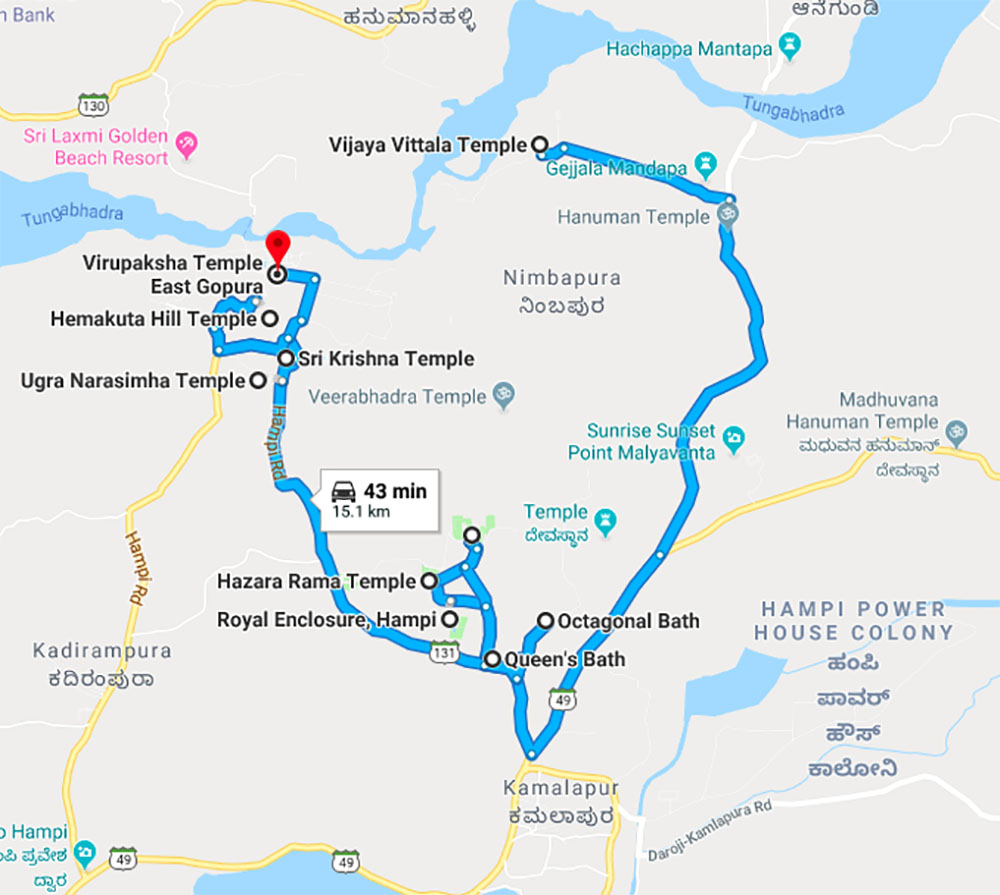
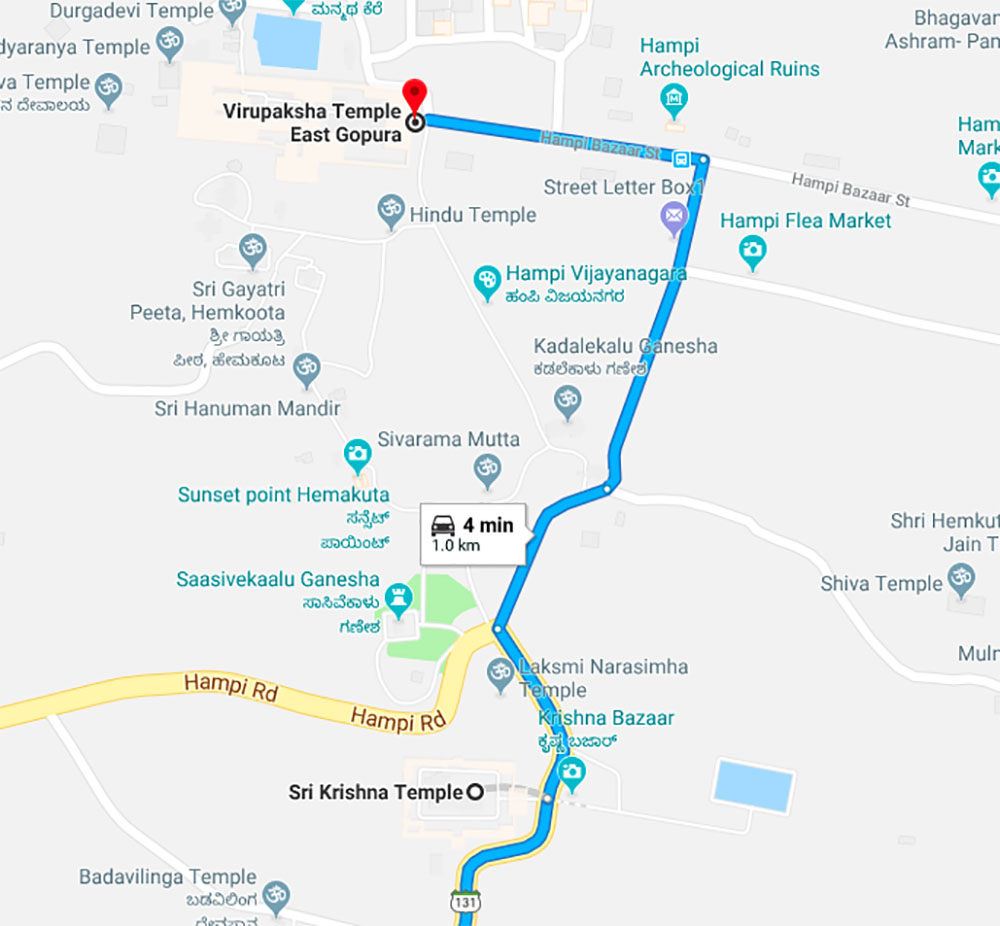
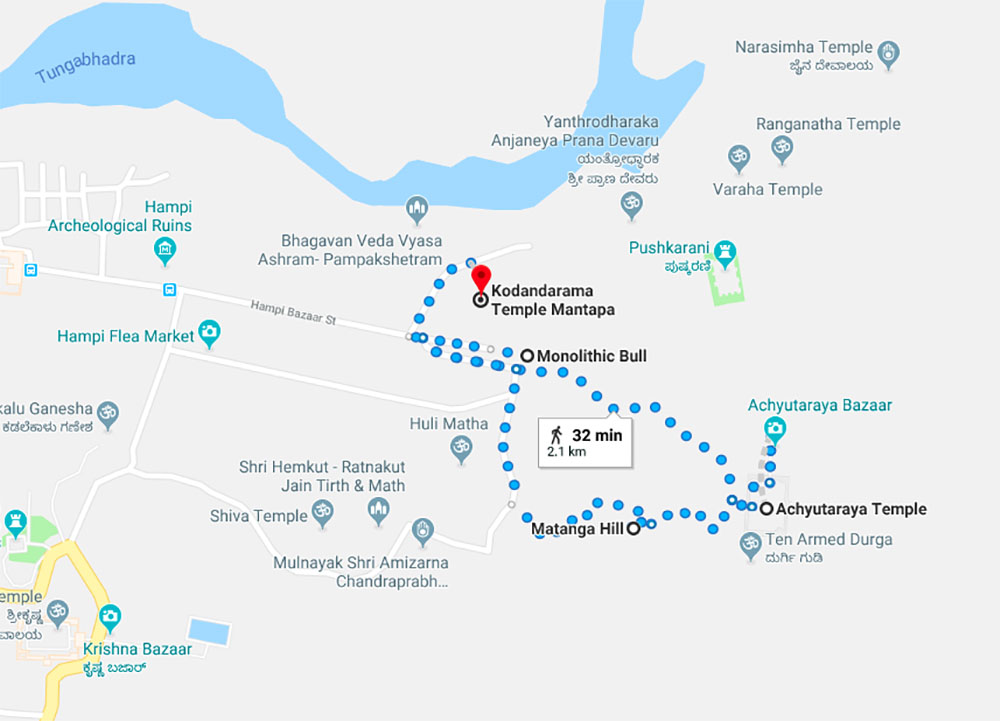
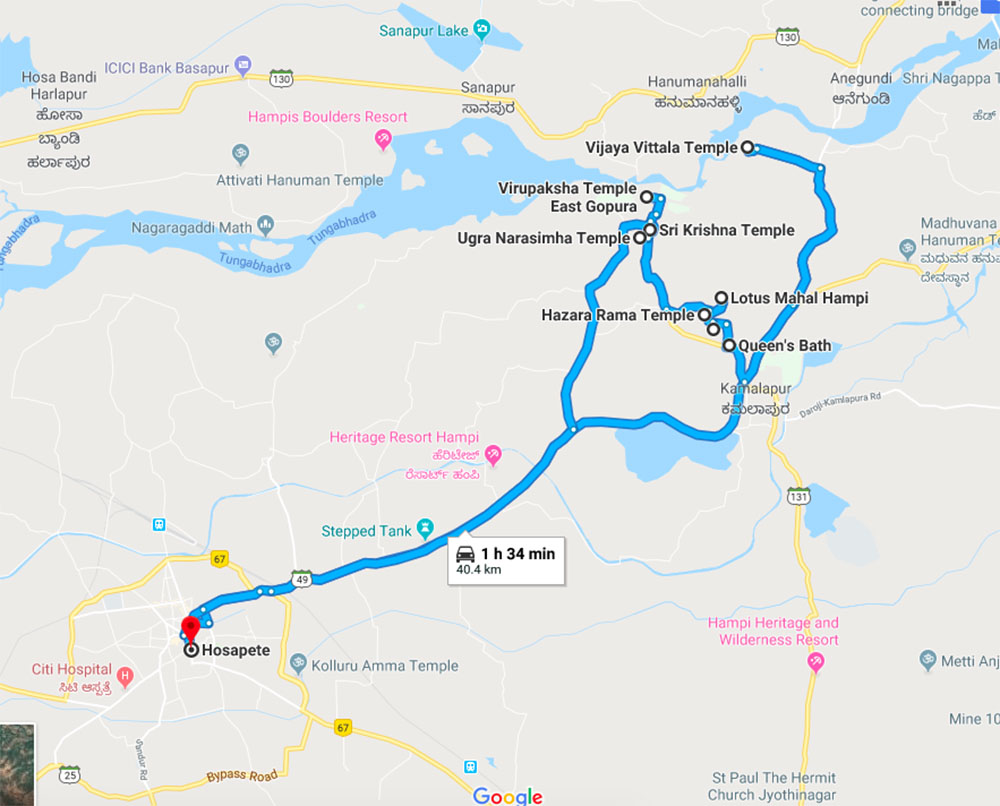

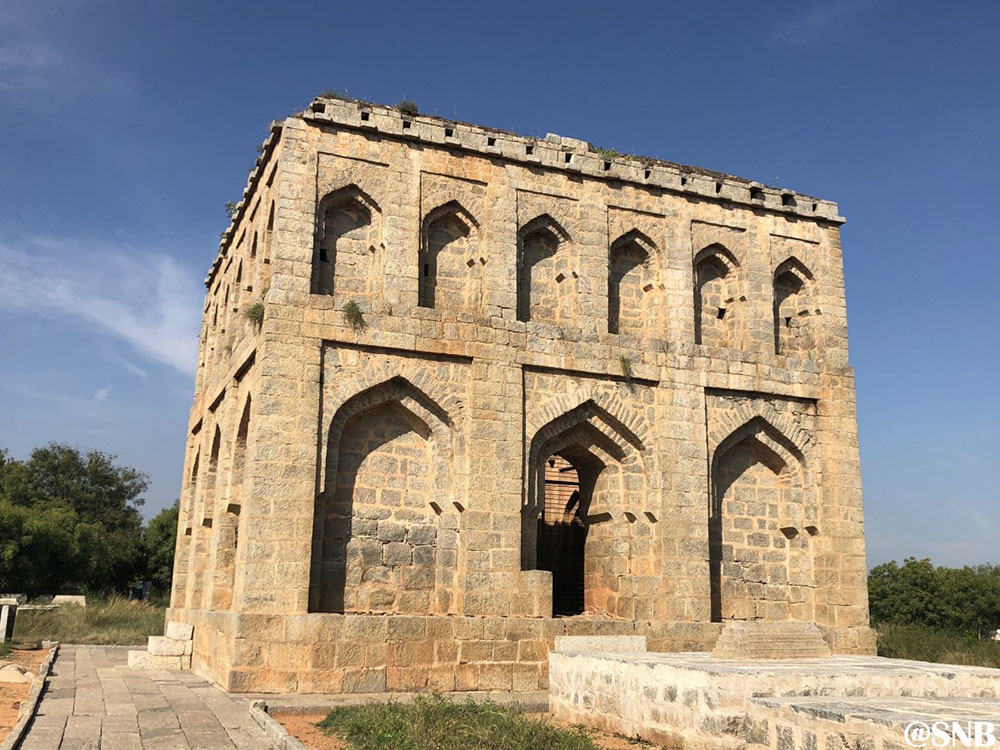
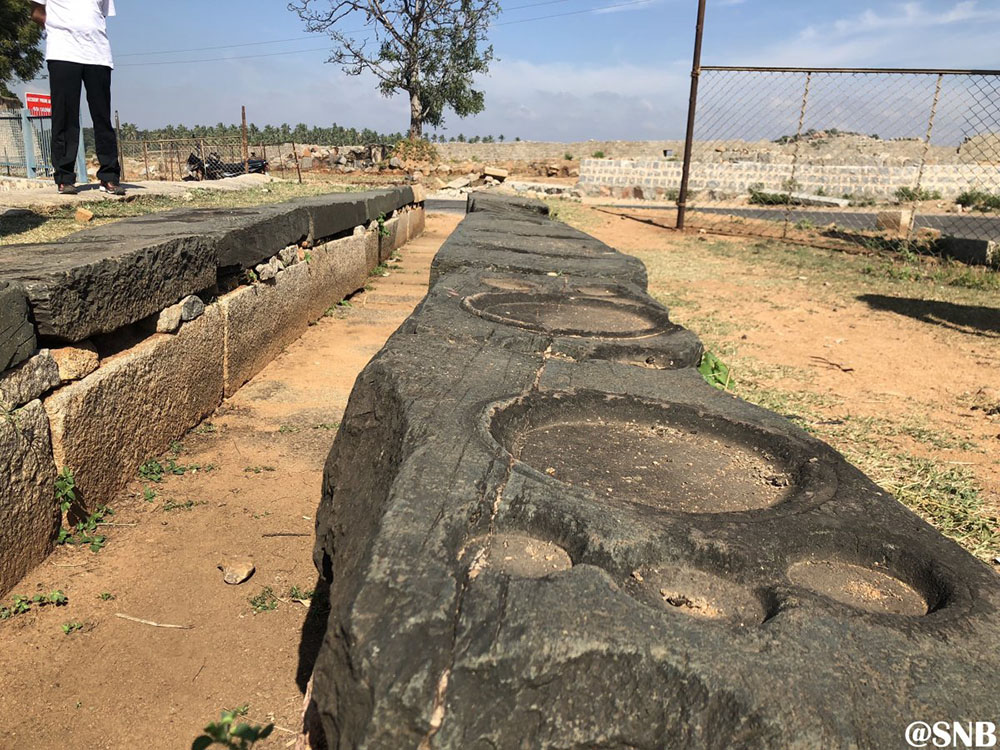
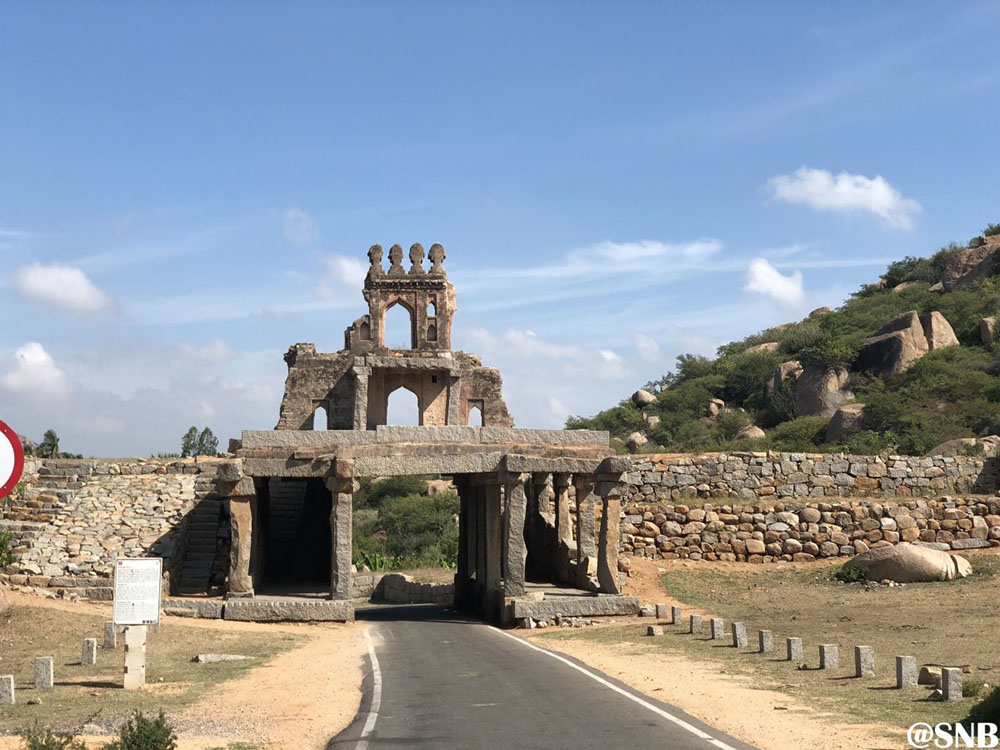
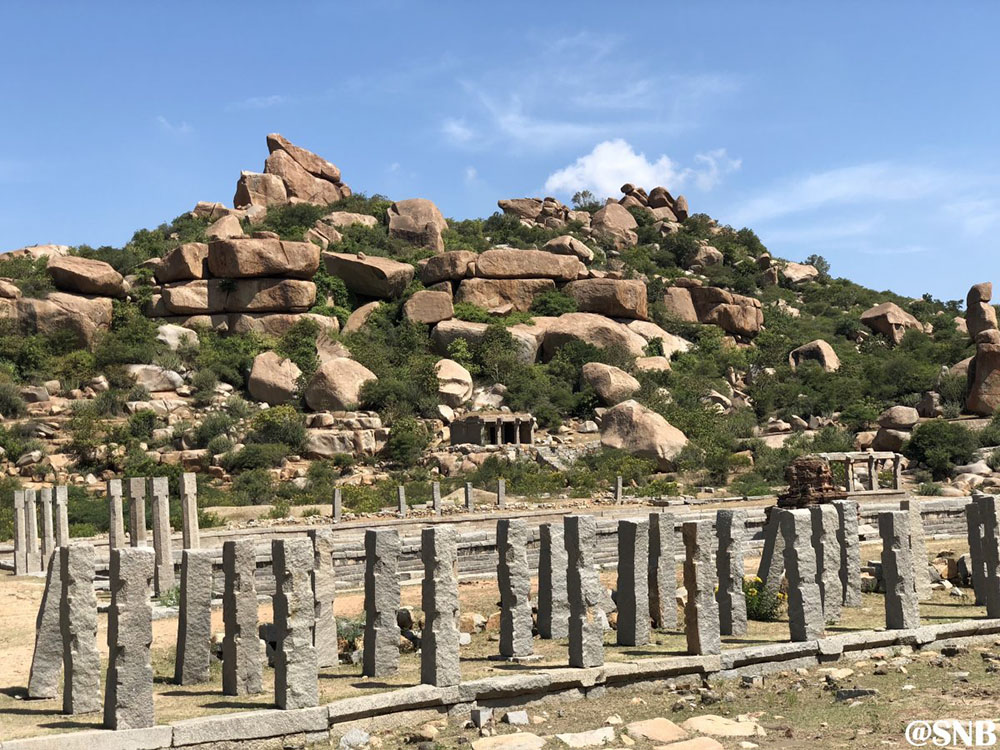
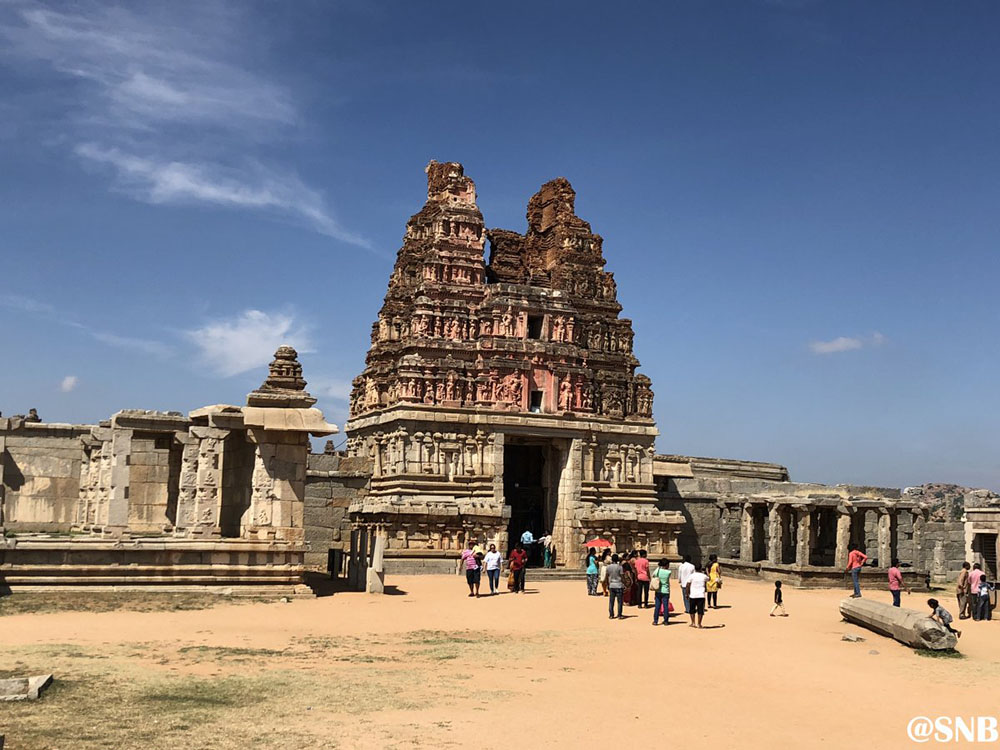
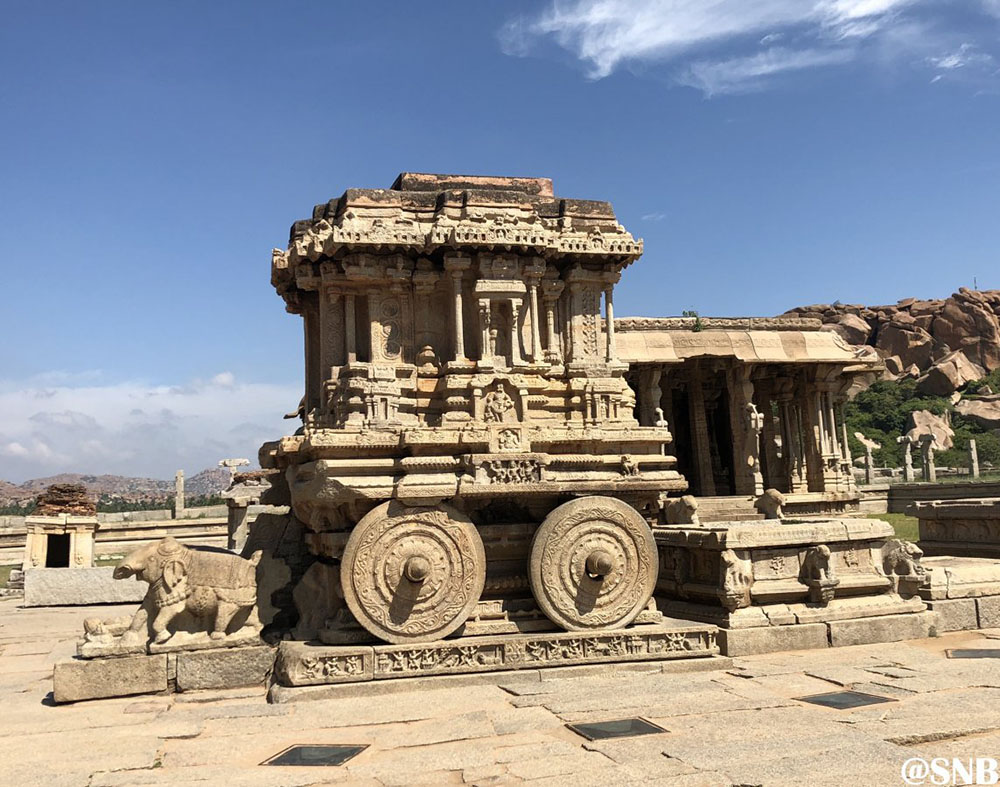
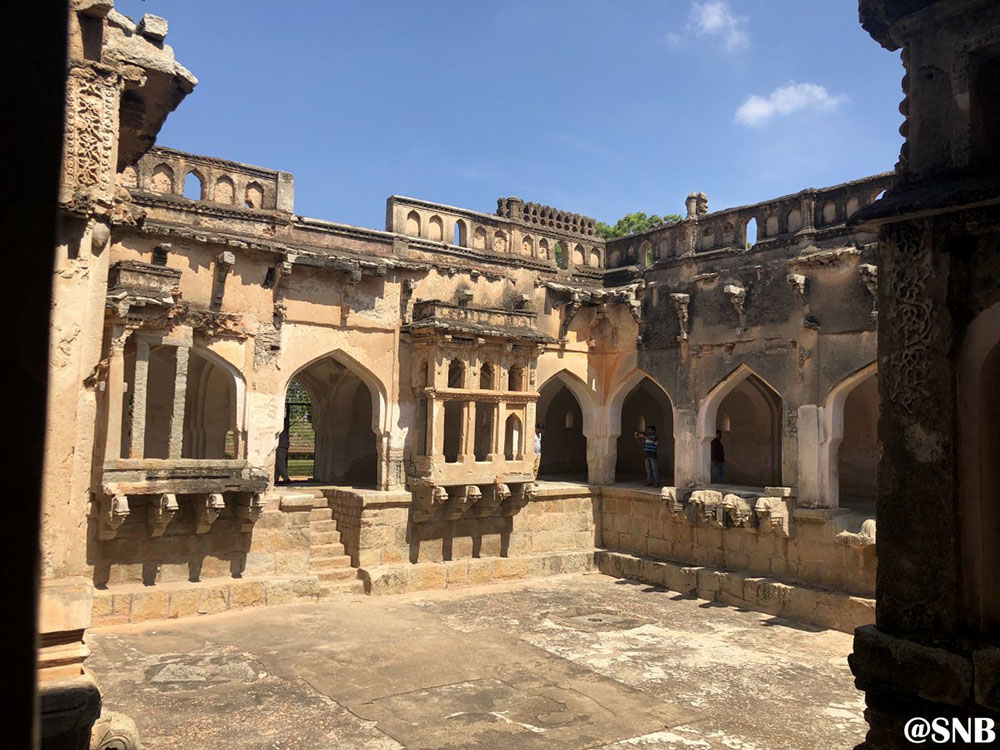
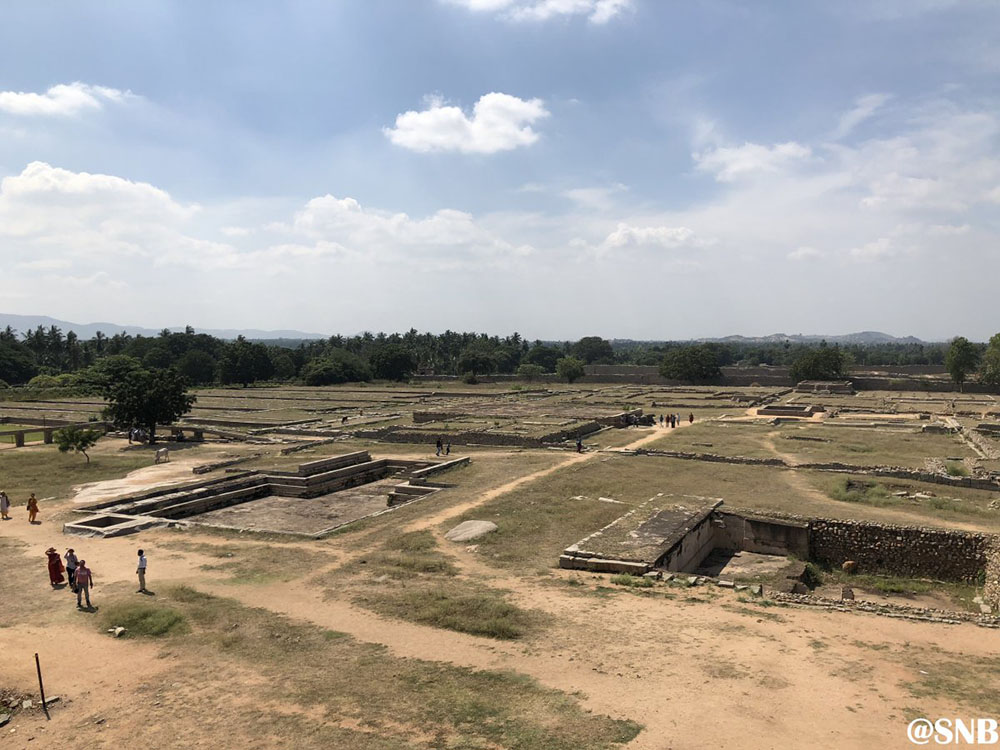
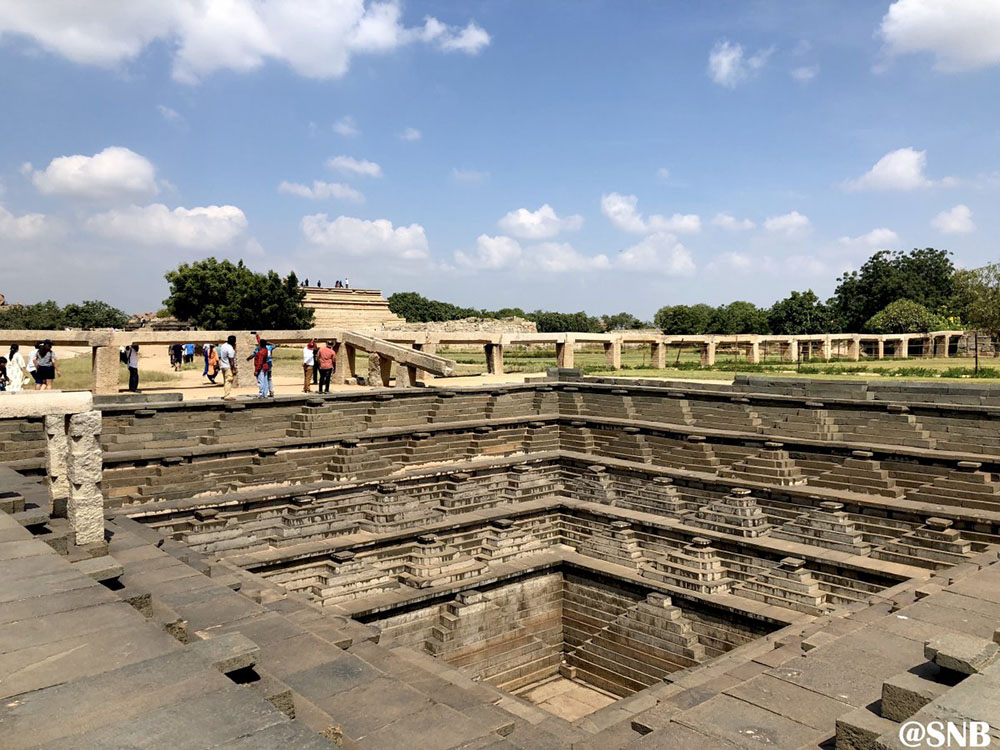
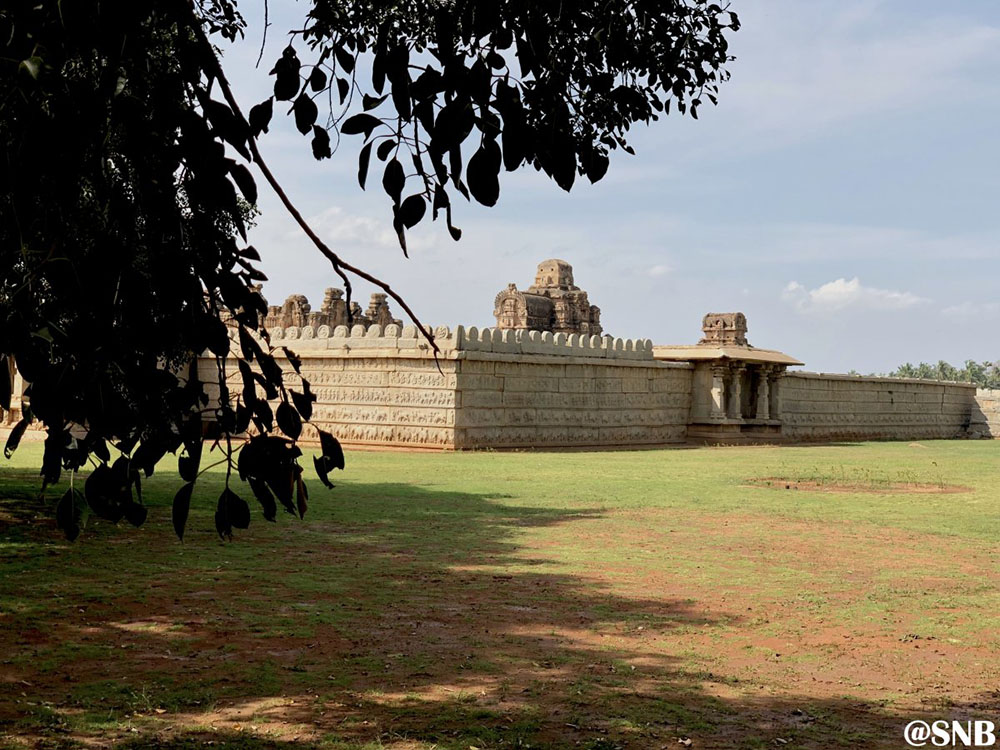
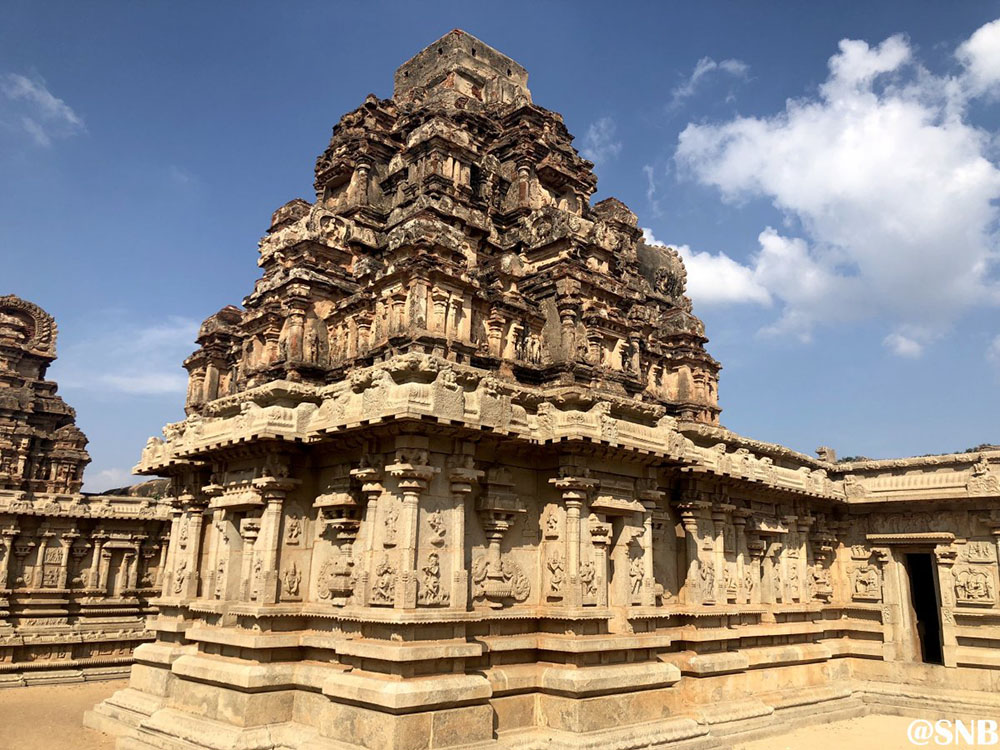
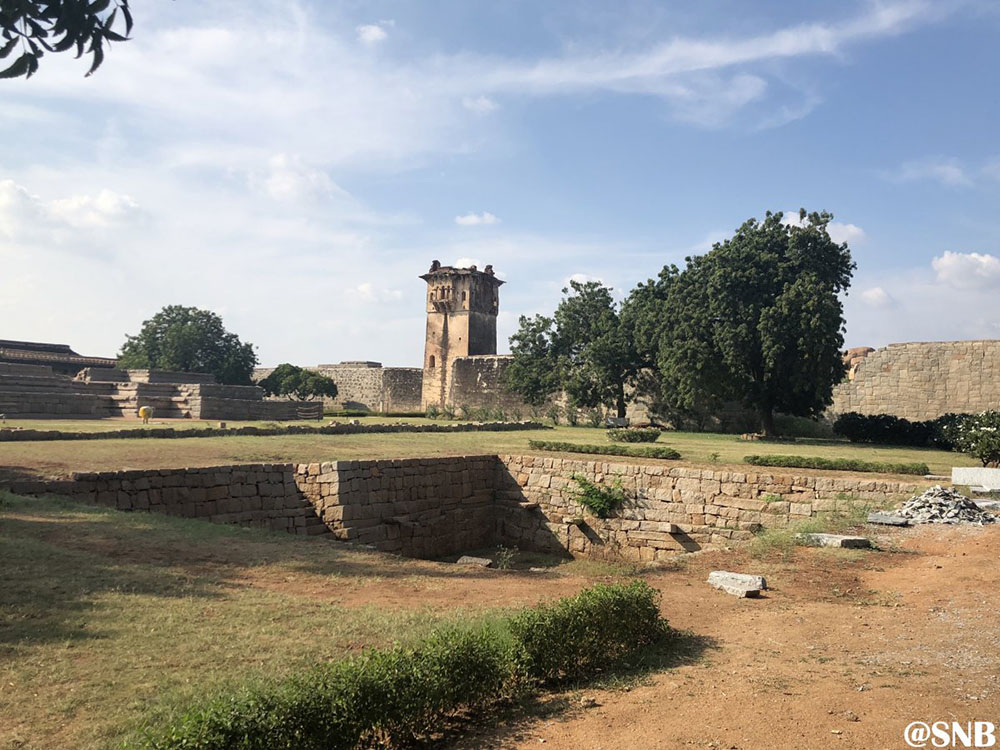
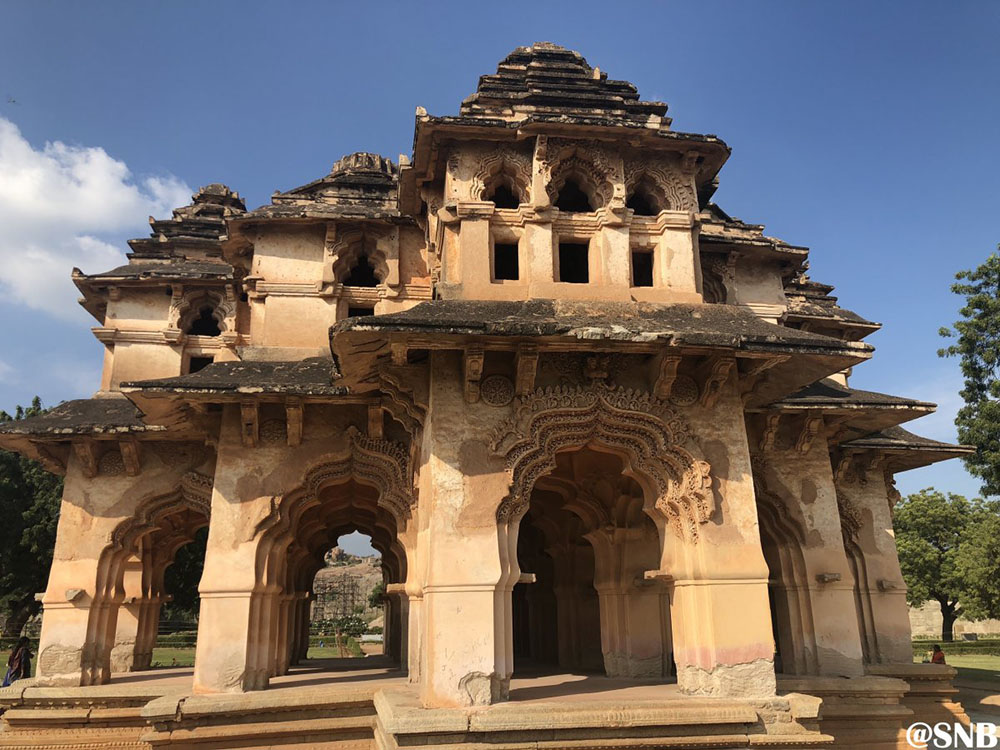
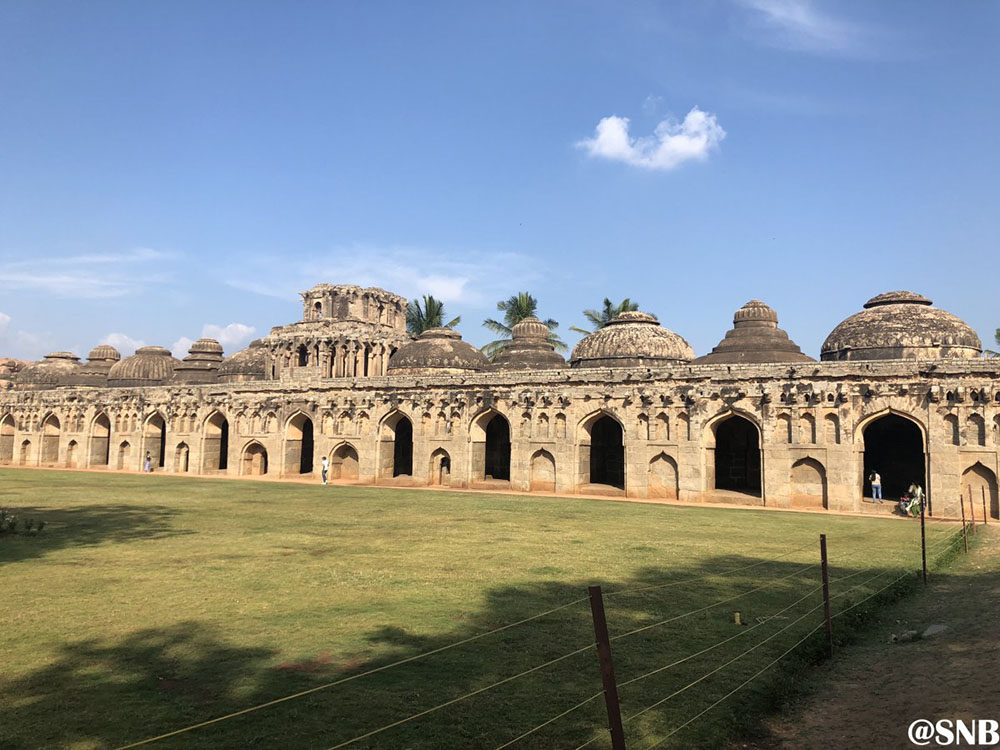
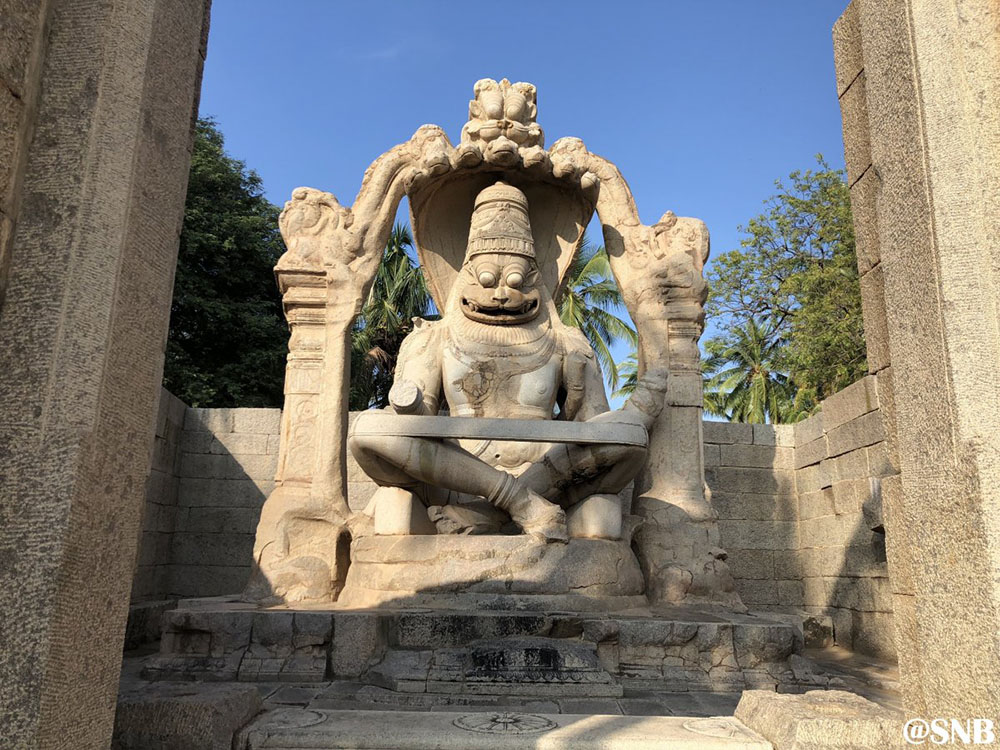
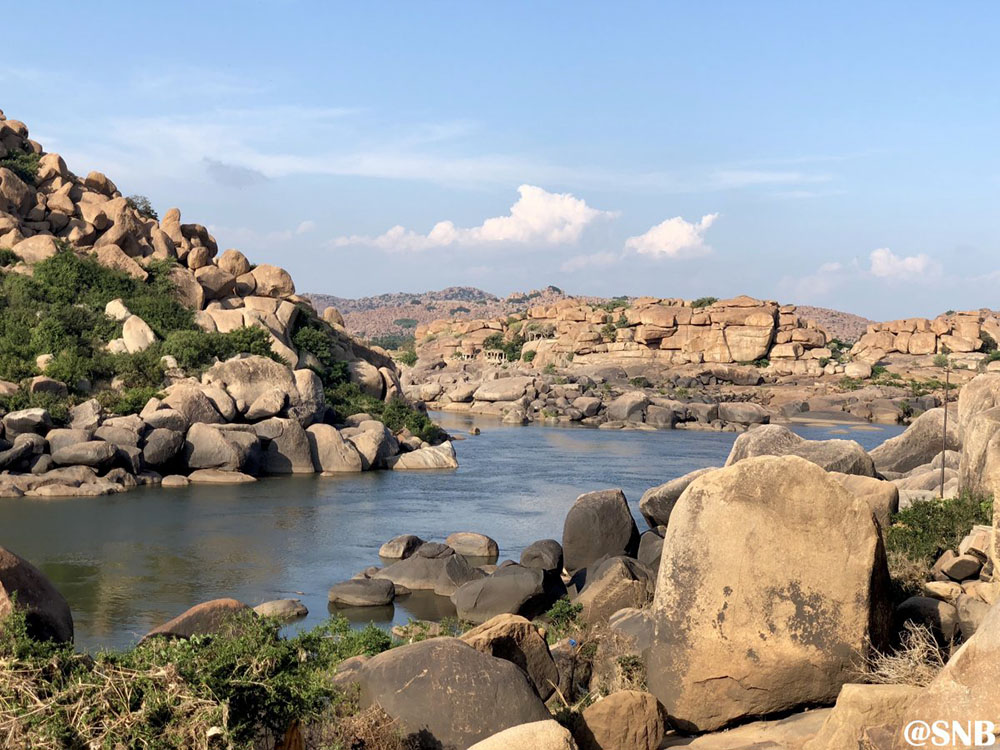
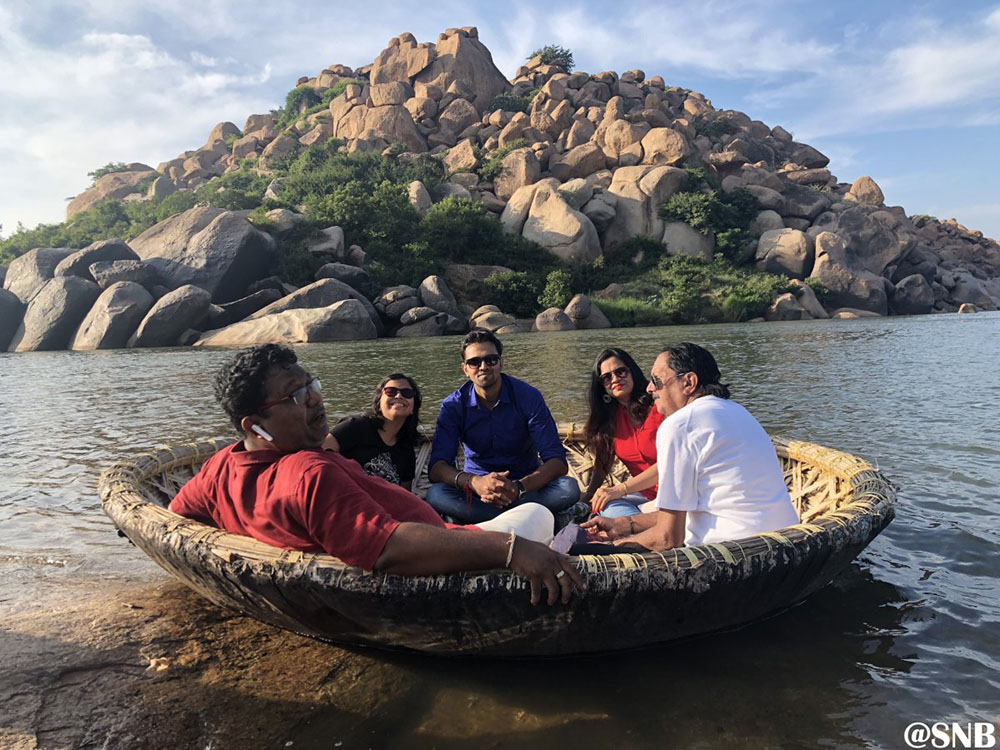
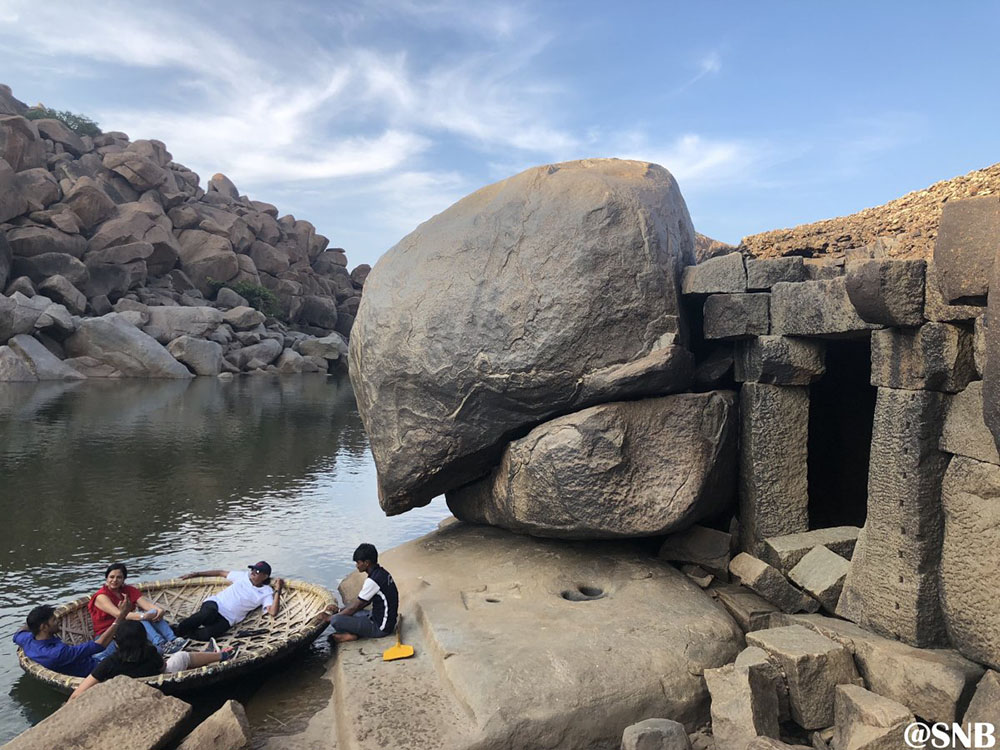
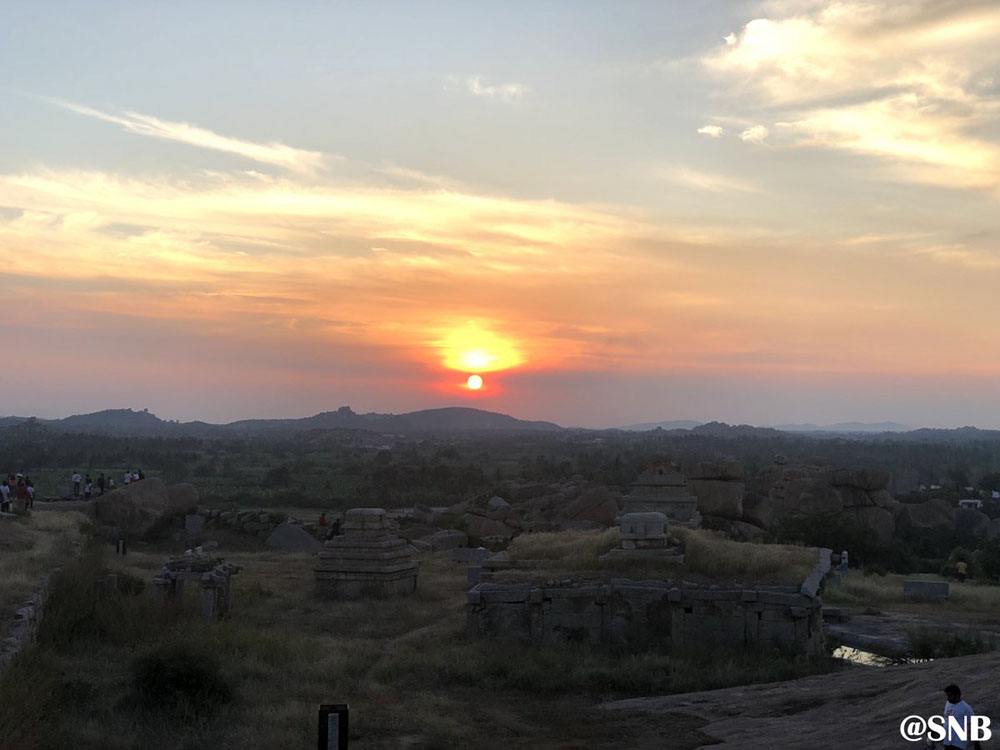
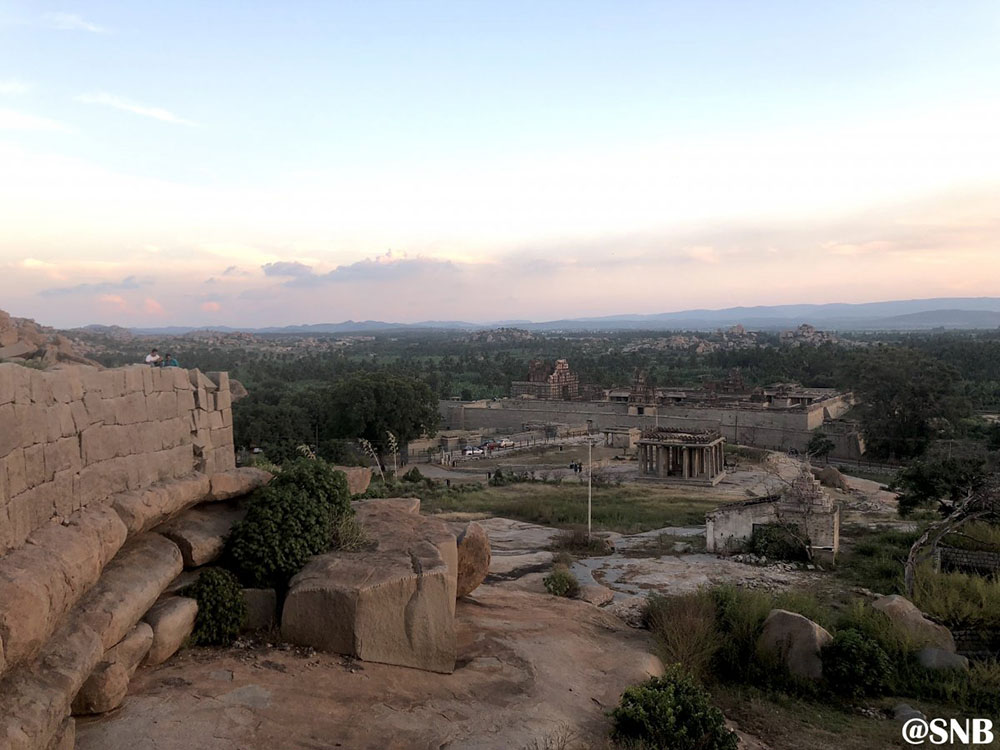
3 comments
Nice info we are driving to Hampi from 7th of Dec to 12th of Dec. any good guide to cover all places in Hampi & around. Tq
Excellent information.
Thank you !!!